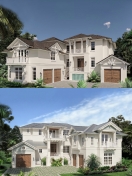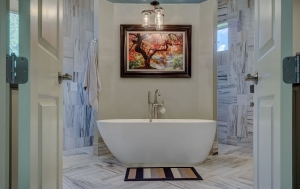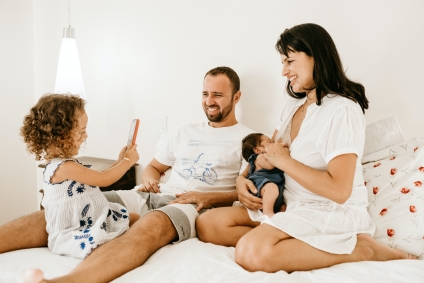Freddie Mac (OTCQB: FMCC) today released the results of its Primary Mortgage Market Survey® (PMMS®), showing the 30-year fixed-rate mortgage (FRM) averaged 6.64 percent.
“Mortgage rates remain stagnant, hovering in the mid-six percent range over the past several weeks,” said Sam Khater, Freddie Mac’s Chief Economist. “The economy and labor market remain strong with wage growth outpacing inflation, which is keeping consumer spending robust. Meanwhile, affordability in the housing market is an ongoing issue due to continued high home prices, elevated mortgage rates and low supply of homes on the market, particularly for first-time and low-income homebuyers.”
News Facts
- The 30-year FRM averaged 6.64 percent as of February 8, 2024, up slightly from last week when it averaged 6.63 percent. A year ago at this time, the 30-year FRM averaged 6.12 percent.
- The 15-year FRM averaged 5.90 percent, down from last week when it averaged 5.94 percent. A year ago at this time, the 15-year FRM averaged 5.25 percent.
The PMMS® is focused on conventional, conforming, fully amortizing home purchase loans for borrowers who put 20 percent down and have excellent credit. For more information, view our Frequently Asked Questions.
Freddie Mac’s mission is to make home possible for families across the nation. We promote liquidity, stability, affordability and equity in the housing market throughout all economic cycles. Since 1970, we have helped tens of millions of families buy, rent or keep their home. Learn More: Website
In an increasingly environmentally conscious world, improving your home's energy efficiency is not only responsible but also a wise investment. As sustainable living grows in popularity, energy-efficient homes are gaining momentum, often yielding a higher resale value and can help sell your home fast due to their lower environmental impact and reduced energy bills. Inspired by the will to reside in environmentally conscious and energy-efficient homes, let's explore five practical ways you can transform your living space into a sustainable haven.
1. Embrace energy-efficient appliances and lighting
One of the simplest yet most effective steps towards a sustainable home is updating your appliances and lighting. Energy-efficient appliances, identifiable by the Energy Star label, use less energy, reducing both your carbon footprint and utility bills. Similarly, LED light bulbs are a smart swap, consuming up to 80% less energy than traditional incandescent bulbs. This small change not only reduces energy consumption but also cuts down on replacement costs due to their longer lifespan.
2. Water conservation with low-flow fixtures
Water is a precious resource, and conserving it is a cornerstone of sustainable living. Using low-flow showerheads and faucets can help reduce water usage while maintaining daily needs. This simple modification can significantly lower water bills and conserve water a for sustainable living.
3. Insulate and seal your home
A well-insulated home is key to energy efficiency. Proper insulation in walls, attics, and other key areas helps maintain your home's temperature, lessening the reliance on heating and cooling systems. This not only saves energy but also enhances the comfort of your living space.
4. Utilize natural light and heat
Leveraging natural light can dramatically reduce dependence on artificial lighting. Consider adding windows or skylights, and keep curtains and blinds open during the day. Additionally, planting trees or installing shading devices can naturally cool your home, reducing the need for air conditioning. These strategies not only make your home energy-efficient but also create a more pleasant and healthier living environment.
5. Smart home technology for energy management
Adopting smart home technologies, like a programmable thermostat, can significantly improve your home's energy efficiency. These devices allow you to automatically adjust your home's temperature based on your schedule, reducing energy waste. Unplugging chargers when not in use is another small but impactful step in reducing energy consumption.
Conclusion
Creating an energy-efficient home is a journey of thoughtful choices and investments. From upgrading to energy-efficient appliances to insulating your home, each step contributes to a more sustainable lifestyle. Understanding the value and benefits of these changes, whether it's for comfort, health, environmental reasons, or technological advancement, can make a significant difference. Embrace these changes and enjoy not only a more sustainable home but also the peace of mind that comes with knowing you're contributing to a healthier planet.

From buying and selling advice for consumers to money-making tips for Agents, our content, updated daily, has made Realty Times® a must-read, and see, for anyone involved in Real Estate.

















